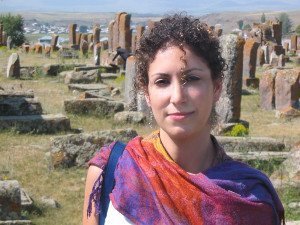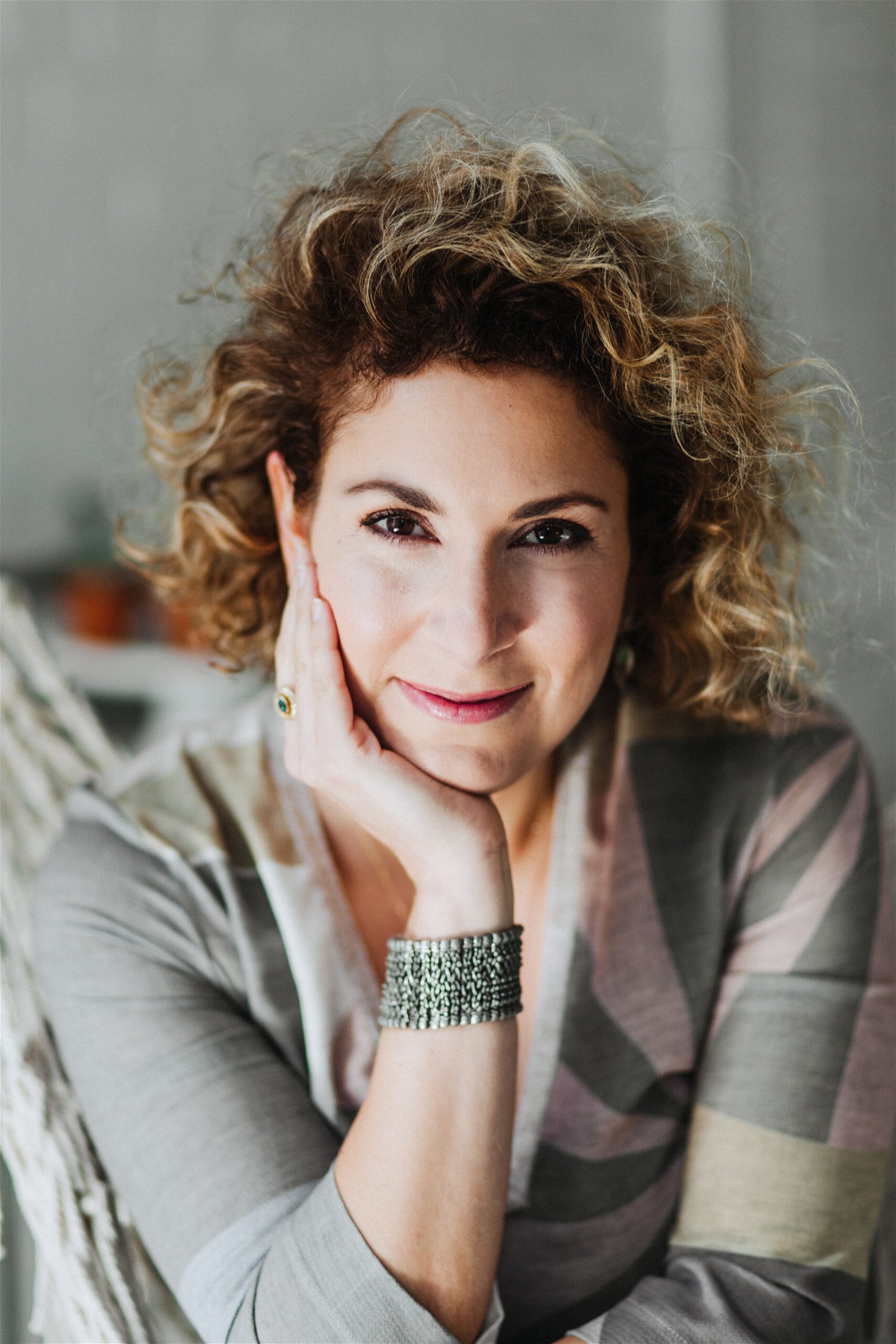Starting this week, Lalai Manjikian will write a monthly column for the Armenian Weekly. Manjikian is a Ph.D. candidate in communication studies at McGill University. She is the author of Collective Memory and Home in the Diaspora: The Armenian Community in Montreal, published in 2008. Her current research is on the social exclusion and inclusion of refugees from different parts of the world seeking asylum in Montreal.

We welcome Lalai Manjikian to the Armenian Weekly family and wish her all the best in her endeavours. Below is her first column.
***
‘WE’
In his poem titled “We,” modern Armenian poet Gevorg Emin asks: “What are we, after all, we and our land?” Influenced by Armenian Medieval poets and French Symbolists alike, Emin responds to his own question by speculating: “If a ship, then aground on rocks / If a vase, then full of tears / If earth, then cracked with pain.” Such depictions of who we are as Armenians are plentiful, redundant, and depressing, as they continue to permeate Armenian rhetoric and politics, as well as cultural and artistic expressions. The closing line in Emin’s poem, however, points to the reality and to the potential of a people who are not strictly defined by a painful past. Today, more than ever, due to a new environment brought forth by flows of information and images proliferating in a globalized world, Armenian identity, particularly in the diaspora, encompasses a unique dynamism and force.
I wish to explore the Armenian Diaspora’s vibrant reality through this column entitled “Scattered Beads,” an image penned by Emin. He concludes his poem describing Armenians living in the diaspora as “guests in our own homes / a land without people, a people without a land / and scattered beads which cannot be restrung.”
Portraying Armenians as “scattered beads” is both a poetic and accurate depiction open to several interpretations. It may sound tragic, somewhat nostalgic, or almost violent if you picture the brutality of a hand yanking a necklace off of a fine neckline. I imagine the ensuing struggle to contain the falling beads, hearing the deafening sounds of each bead crashing to the ground, taking sporadic directions or clinging on to other ones. Some disappear in the cracks and dark corners, irretrievable but not lost. We are scattered beads no doubt, as a result of an orchestrated attempt to snatch that bold necklace off. We are beads scattered all over the world, part of a post-genocide diaspora. But why lament over the inability to restring what is already scattered but not necessarily broken? Each bead has its own life and trajectory, wherever it may land. Each bead is equipped with a mission, knowledge, and resourcefulness—if it wishes to seek it.
The present Armenian Diaspora occupies a unique position, emerging from the burden of sheer survival to emancipation. Today’s diaspora, particularly the youth, is making a come-back. Whether excelling in humanities, medicine, art, business, or athletics, we are all over the world, leading the way and traveling to new heights, climbing to high positions, reaching places not commonly attained by Armenians in the past. In addition, compared to past generations, today’s diaspora has easy and full access to the homeland. This novelty in itself introduces an entirely new dimension to our diasporic identities. No longer is the homeland confined to “myth status” presented to us in books, stories, songs, and photographs. Armenia is no longer a memento, but rather a tangible reality. Armenians from around the world, especially the youth, have begun to play an active role in the country’s progress and growth.
The fact that Armenians are scattered should no longer be viewed as a source of anxiety for our diasporic strongholds who are doing their utter best, and largely succeeding, to preserve Armenian identity and culture. Instead, our experiences and achievements in the diaspora come to nurture our diasporic identities as well as the homeland. From New York City to Arusha in Tanzania, Armenians are colorful and bright “beads” ready to take in all that the world has to offer, and in turn, enrich the world with their own Armenianness, however expressed or embodied. In fact, Armenians living in the diaspora negotiate multiple belongings between various cities, countries, the homeland, even historic Armenia. Today dispersed beads are carrying more nuances than ever; we are career men and women, activists, queer, straight, bisexual, we belong to various movements, causes, subcultures, alternative lifestyles and are Armenian. Scattered beads that come in different shapes, colors, and convictions—yet still Armenian, creating a necklace like no other.
These beads are too attractive to ignore, therefore this column will explore various socio-cultural issues we face throughout the diaspora and in Armenia. I embark on this journey without a clearly defined itinerary, seeking to find scattered beads throughout the diaspora, to discover who they are, how and why they roll, and the paths they take—the roads we know, the ones we may think we know and the roads less traveled.
Decidedly, square beads are out, especially those that stay in place and stagnate. Instead, scattered beads, the round kind that move and roll and keep progressing, are here. This is who we are today: scattered beads creating a new diaspora, continually wandering in new directions…
Note: The excerpts cited from Gevorg Emin’s poem “We” or “Menk” can be found in the author’s poetry collection titled Land, Love, Century (1988), translated by Martin Robbins with Tatul Sonentz-Papazian and from a complication of Armenian Poetry entitled Poems of Armenia: Sojourn At Ararat (1987), translated by Gerald Papasian.



Congratulations to the Armenian Weekly for being progressive and avant-garde. Miss Manjikian is an active member of the Armenian community of Montréal and I have had the pleasure of working with her.
Her analytical skills will help the readers understand the evolution that the Diaspora is going through at this moment.
Thank you for giving us this opportunity to share with Miss Manjikian on a regular basis.
this author has captured the essence of the diaspora. looking forward to more stories.
Abrees Lalai jan…a poetic and apt description by you as well…scattered jewels all over the globe…congrats on your new series!
Great idea, Lalai jan! Look forward to reading your next columns! Apres!:)
I will be looking forward to Ms Manjikian’s column. I have read some of her previous work and believe there will be merit in this column for all your readers.
thank you.
I’m Lalai’s uncle, What else can I say than “ABRISS”.
I am very much impressed by your article and am very glad to have this nice opportunity of reading you!
As Lalai’s PhD supervisor, I am used to her strong writing and thoughtful analysis. I’m delighted that this weekly column will bring her voice to a wider audience. The first installment is lovely and poetic. Congratulations, Lalai and Armenian Weekly!
Let me join the others in congratulating you Lalai jan – as I told you in my email, I think we can all benefit from your work, which is both thought-provoking and relevant. How apt the necklace/scattered beads metaphor is… we have indeed been forced to try and catch the beads, hoping to restring them without too many pieces missing so as to have something whole again. It is our struggle as a people but on my better days I think we’re doing a fine job. Cheers to all those who contribute in their own unique ways to “restringing” what may end up a more multi-faceted and beautiful necklace in the end…
The question of the Armenian identity has preoccupied my mind in the past several years, and it is not a question I have been able to answer to my satisfaction yet. I look forward to the light that such a bright mind will shed on the subject. It looks very promising Lalai, keep it up!
Shnorhavor Lalai jan! I’ll make sure to follow your columns.
Great Noraduz pic! :)
Often those of us living in Armenia have the general attitude that restringing the beads implies moving to Armenia, at least what’s left of it. Although that made sense to me, I often understand that the existence of a Diaspora supports us in so many ways, and it gives the Diaspora a momentum of its own.
Note: did you know that the GDP per capita of Armenia is much higher than our neighours’ (Azerbaijan and Georgia, source the Economist Intelligence Unit) although one has petrol and the other trade routes to support its economy? The Armenian Government regularly thanks the Diaspora for this feat.
So Dr. Manjikian, I will await your columns with excitement.
Congratulations to The Armenian Weekly,and you Lalai.
I will be looking forward to reading your column.Your profound analysis and wonderful “Beads”will certainly fill our heart and soul with the beauty of your thoughts and expressions.
Very impressive article…Thank you.Good luck!
Congratulations Lalai!!
I loved this article, very poetic and artistic! I can’t wait to read more of your columns!
Abriss and good luck!
Very interesting article Lalai. Well written! I look forward to reading more of your articles and grasp more insite of Armenians from your perspective.
Thank you for Ms. Manjikian’s column. It is well-written and perceptive. Please put me in your subscription list. Please publish my email message if you wish.
Jirair Tutunjian
Toronto
Astute observations.
I am a bead who lives in Indianapolis, IN. I am an older bead of second generation Armenians–of my grandmother (a survivor of the Syrian desert. My father married an– American woman during WW2. This article is lovely–and the poem.